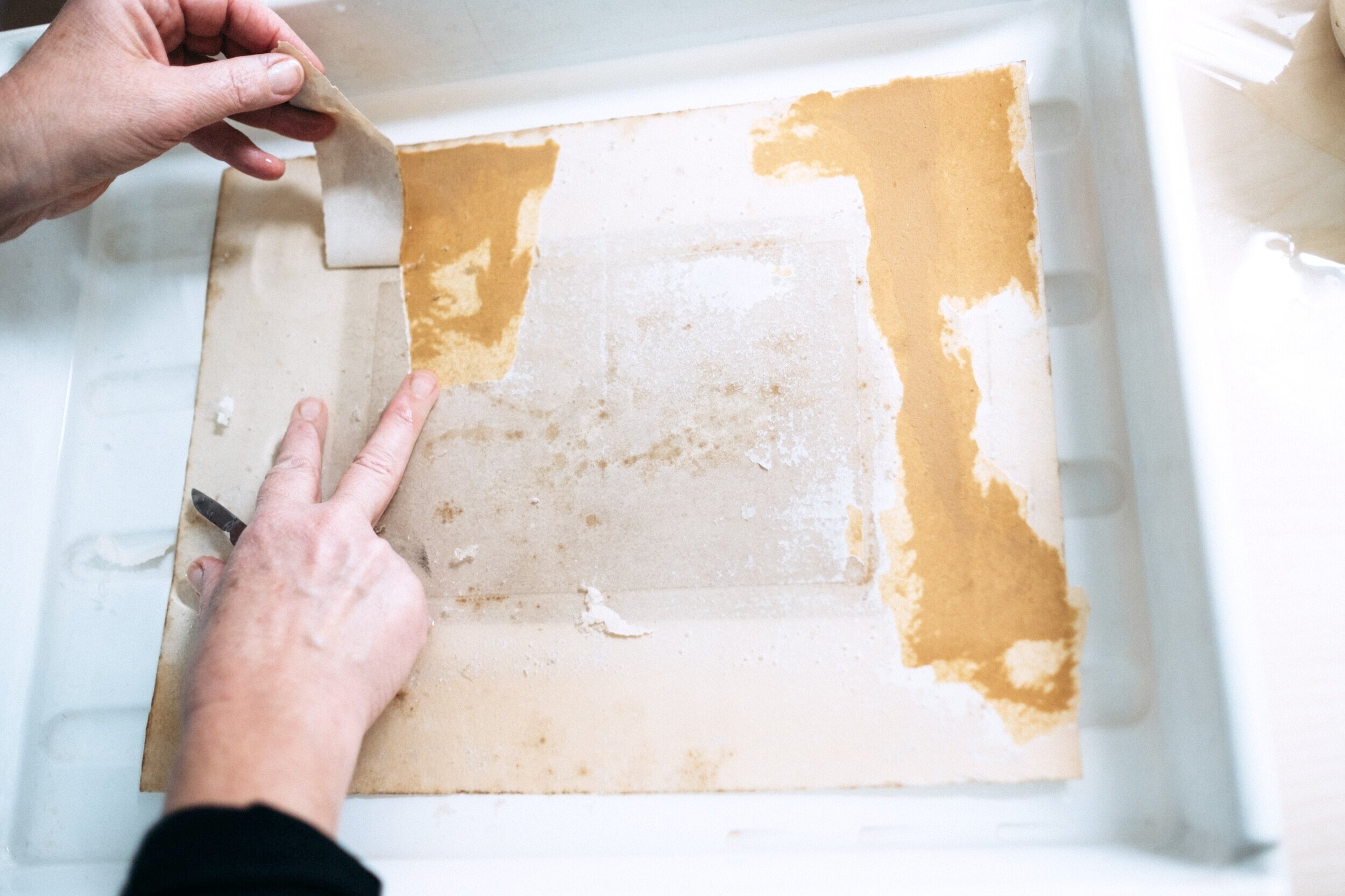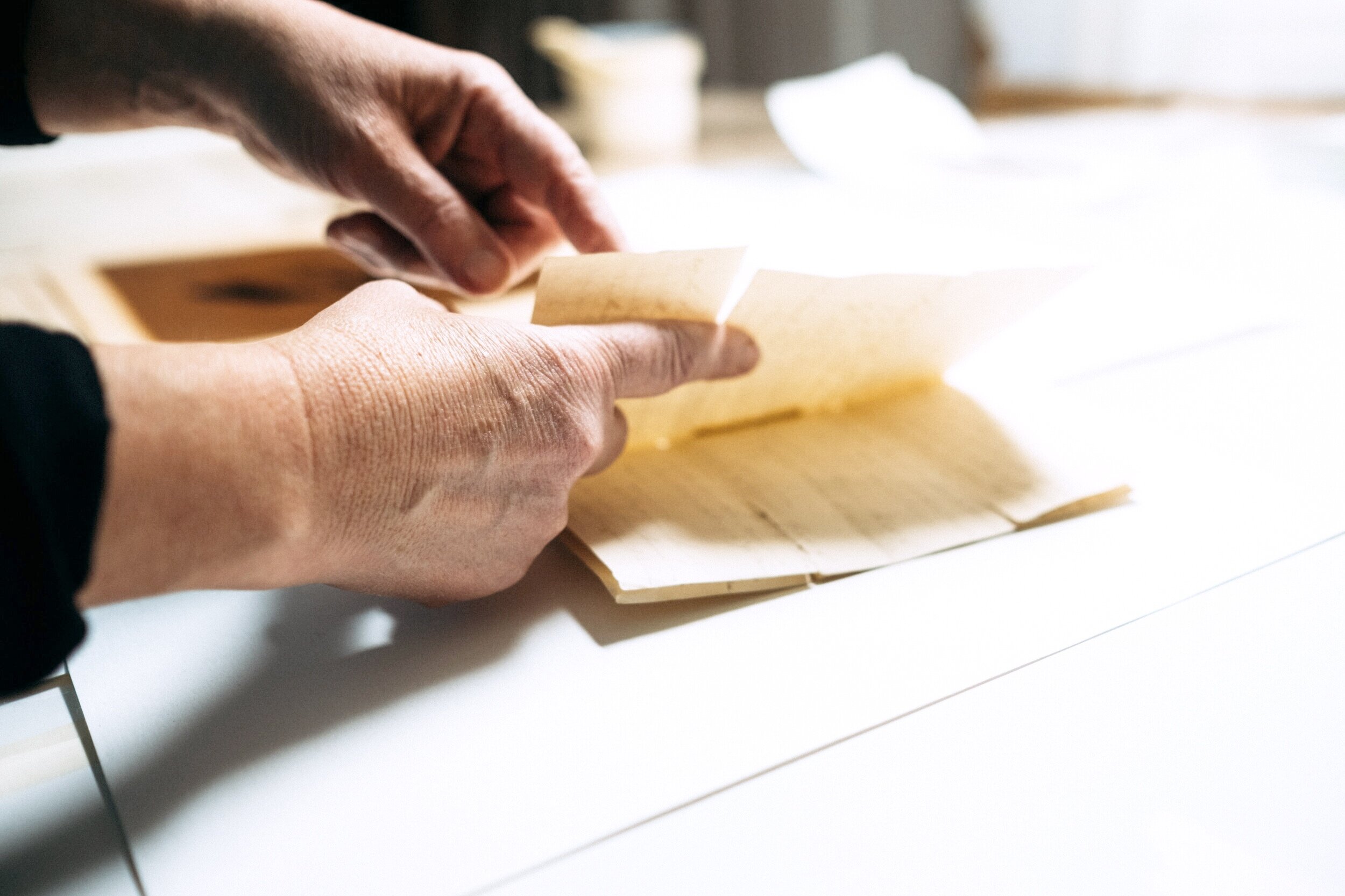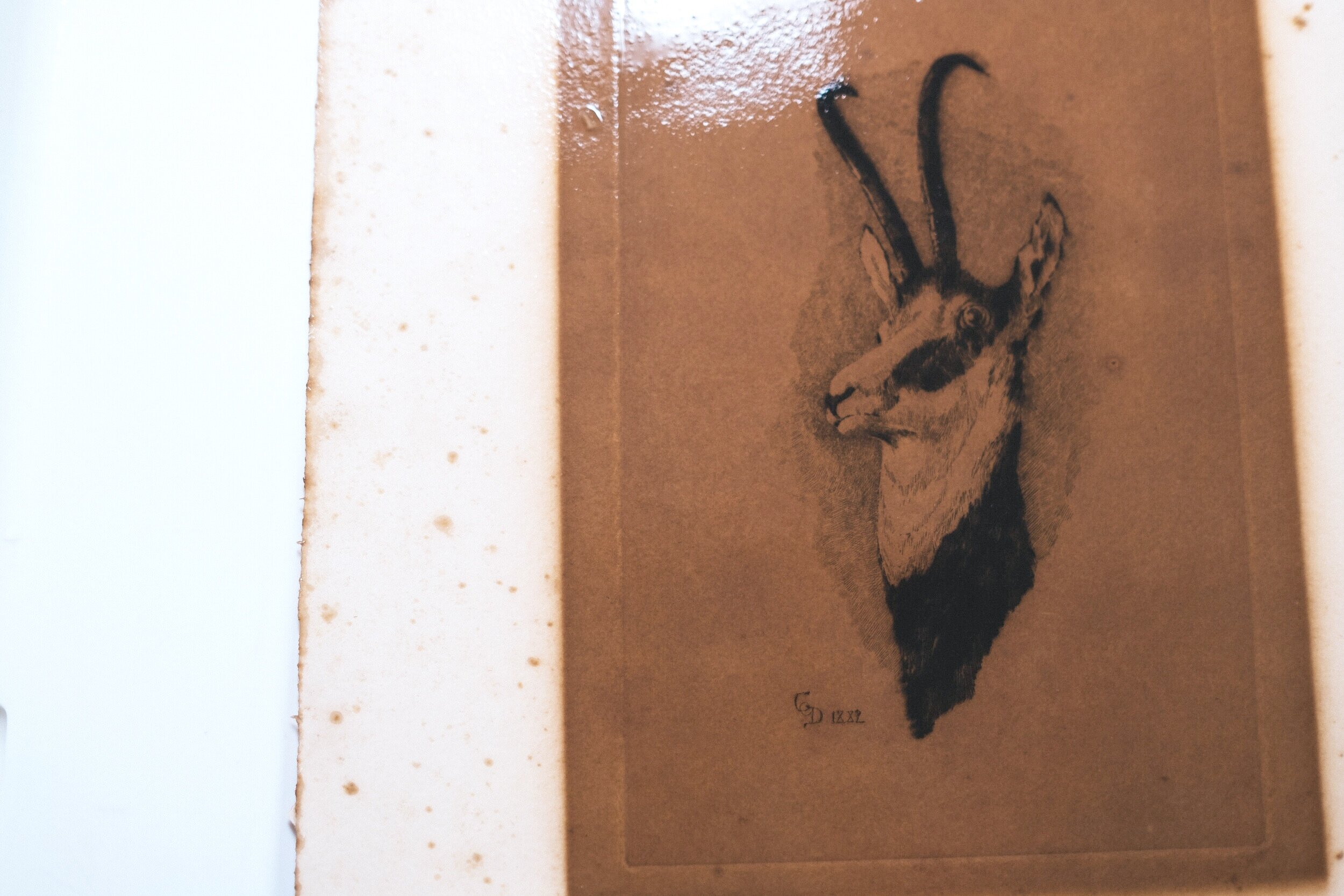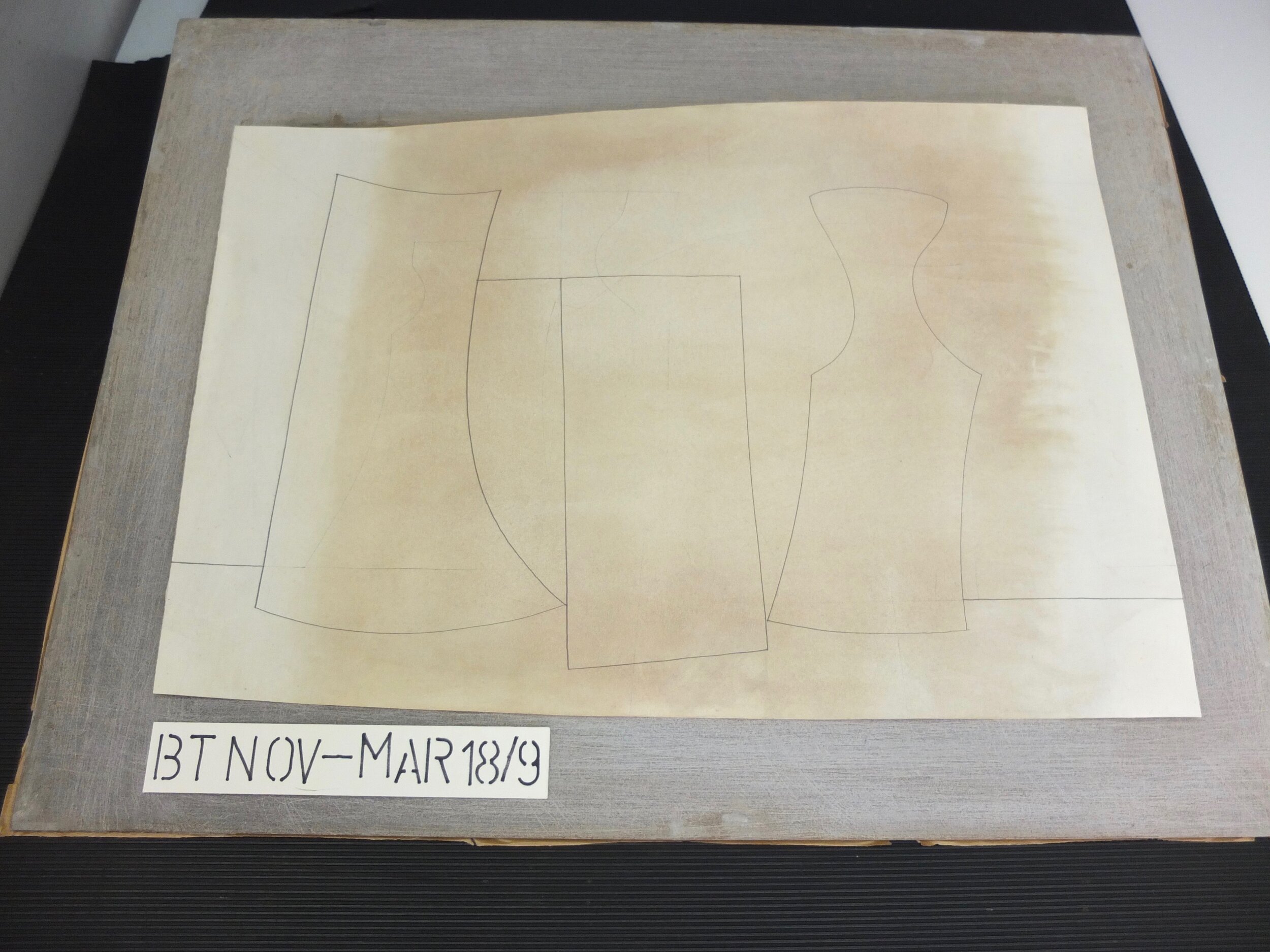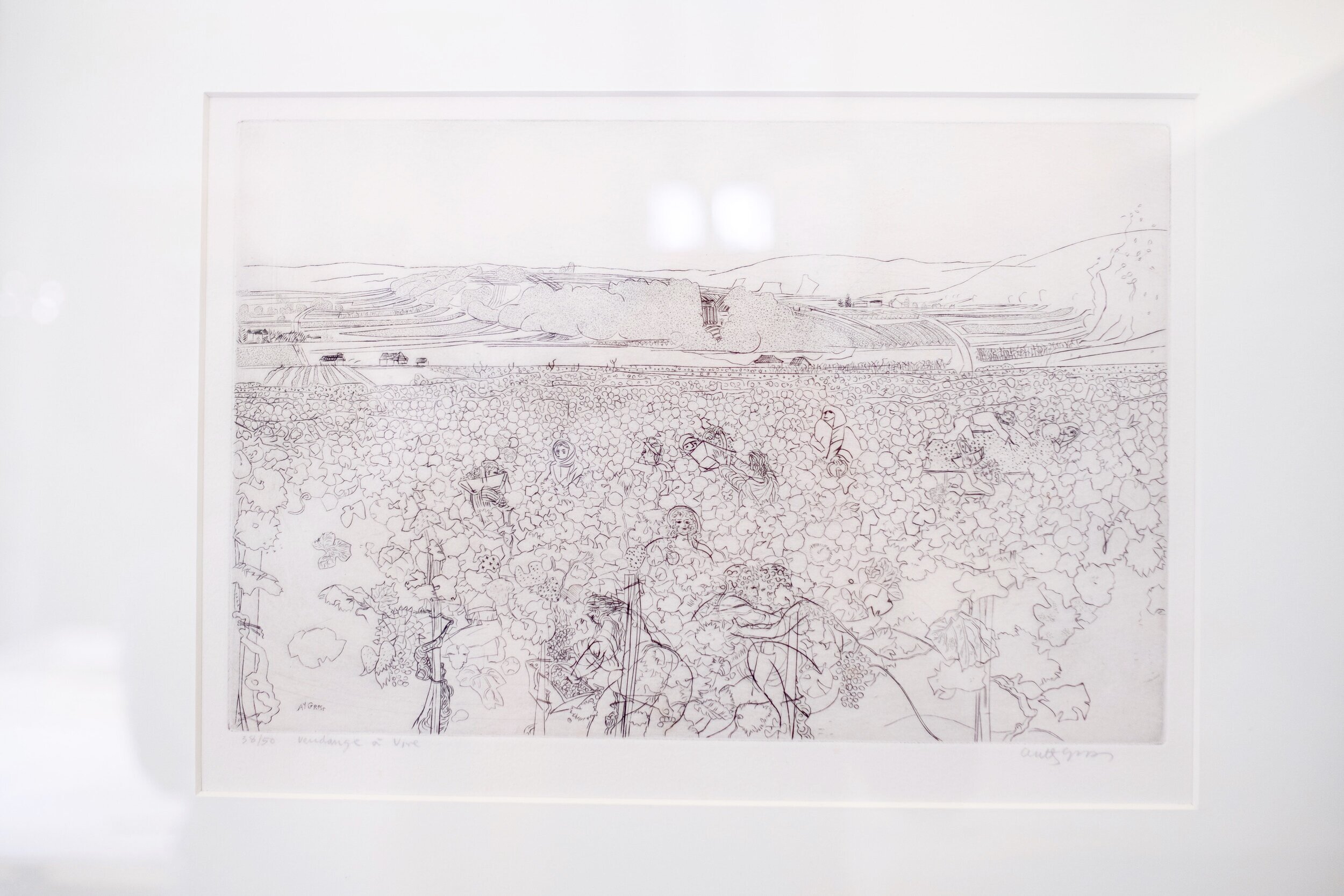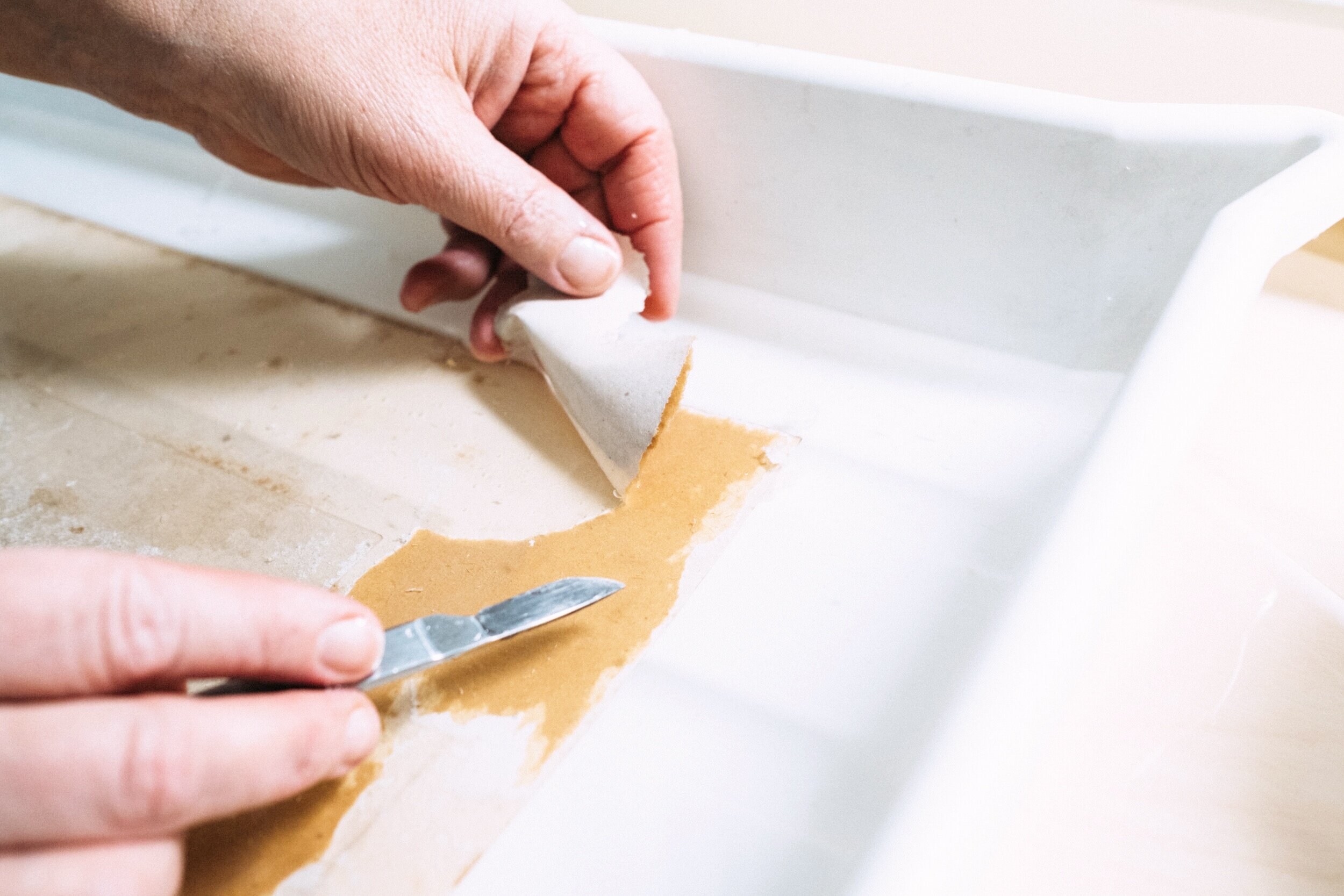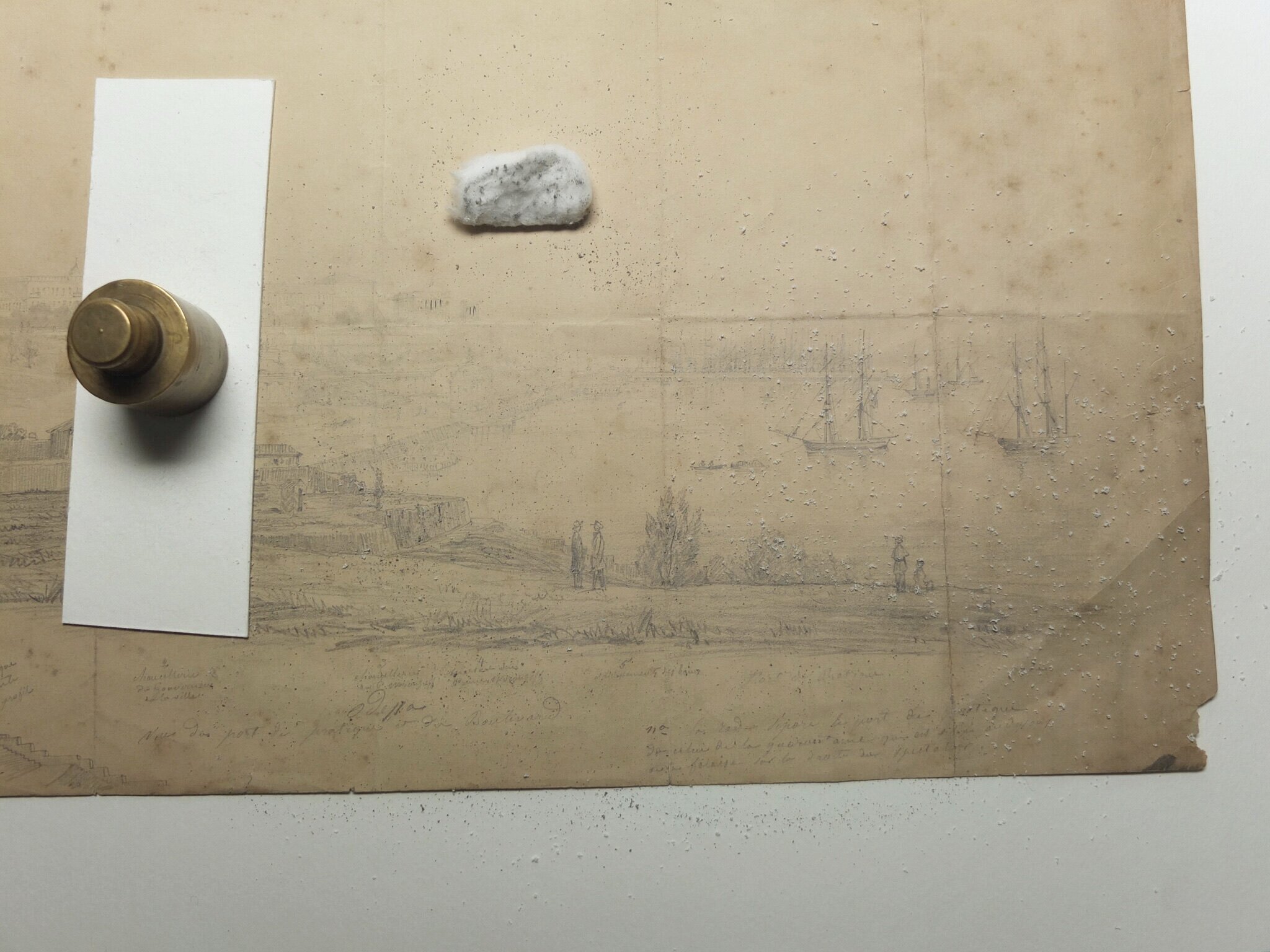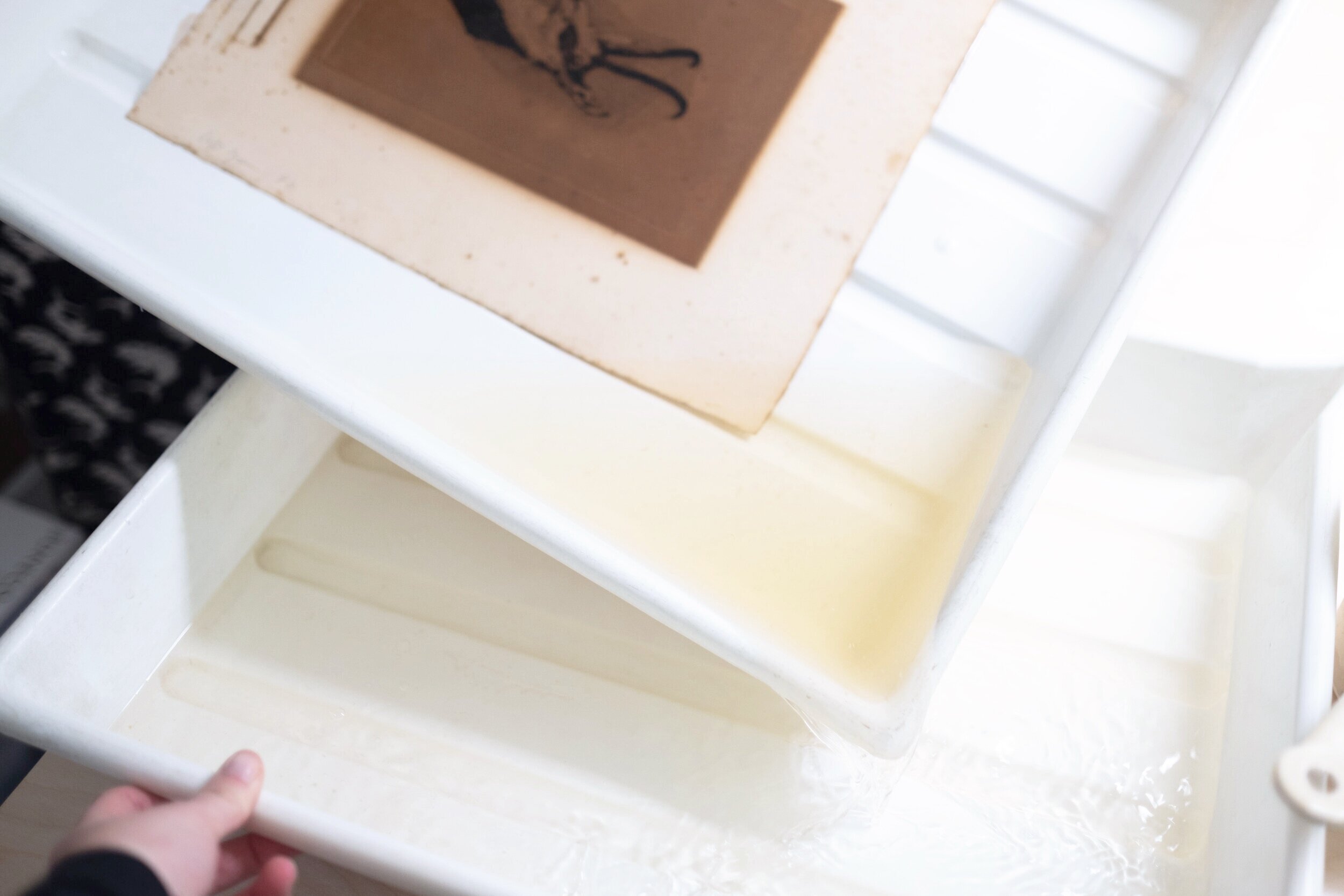Paper Conservation Processes & Techniques
INTERVEIW WITH SARAH
How does rinsing work?
Water is the medium that caused the soluble discolouration that paper has absorbed from the frame, which is not very air tight. The clean water and the hydrogen carbon in the chemistry of water pulls out the discolouration. By changing the pool of water, the tray of water with fresh water and the next batch of fresh water will continue to pull away the discolouration from within the sheet of paper.
And how long does that take?
Any restoration is by sight and intuition and feeling as an experienced conservator. You need to jiggle the pool of water so that the discolouration gets dissolved. You don’t let it sit in one place. Some pieces can be immersed in water for many hours. Some when wet can be turned over in water and one can continue to remove the any backing or mount. The removal of any backing paper can sometimes be completed with fingers, choosing to go in a circular action so the fingers with the soft glue and remains of paper and all comes away smoothly. Of course, you don’t know how long this is going to take, so often a conservator is hopeful the client is happy to agree to time and materials to complete the task. I have to be patient, sometimes some areas are difficult to remove, so I will let it continue to rinse. Another trick is that I use warm water, it helps the solubility of the discolouration as well as to make the glue melt with my finger when I go again.
Tell me about Wrinkling, fold and undulating art work…
Sometimes called undulations and if the work of art is a large sheet of paper, the undulations is more difficult to manoeuvre, it is either part of the handmade paper or you know the client/owner would like the paper to be flat or they may appreciate the undulations, it depends if the sheet of paper has a decal edge. It is looking at each piece and whether what I do can be long lasting and also to remind clients that if a frame is not air tight the paper will continue to be hygroscopic and will expand when there is higher relative humidity in homes or galleries and when the environment is too dry then the works dry. Micros climates change, again it is important to hang a work of art in a different place so the wrinkling can be more controlled. Wrinkles may be able to be corrected and other times they may be considered as part of the work. We have to realise that artists sometimes use paint that cause wrinkling.
What is Cleaning?
Cleaning is a word that doesn’t explain much at all. Everyone is more aware now of not to over clean the Mona Lisa, but as a conservator cleaning is our stock and trade. It is exciting to be able to reduce the dis-figuration within a picture.
A long time ago I met a lady who wanted various pictures to be cleaned, one was an etching by Picasso and she was knowledgeable about cleaning so she asked – I am so used to seeing the picture with some discolouration, but she knew that discolouration leaves acidity in the sheet and she didn’t want the work to crumble away, she asked for it to be cleaned, but not transformed. She wanted to look at the picture and enjoy it. It was a lovely discussion to have. She knew that the work did need to have some acidity rinsed out. She liked for it to look a little mucky.
Dealers and auction houses work closer with conservators and request condition reports to talk about could be expected if a picture was cleaned. You begin to play around with the word cleaning to sound out how responsive the other person is. How far does the innuendos of the word get referred to in how they talk? And so yes, cleaning is a good word.
Why is Reframing important?
Re-framing is necessary because if people have their art work not framed and it just sits on the floor leaning against the wall of an entrance hall, it is bound to get knocked about and damaged again. I always encourage people to get their art work framed after the cleaning process. Framers can think about what can make the work look presentable without being too much of a distraction from the piece. I remind owners about what conservation rituals they should look for, like the glass or glazing not pressing on the work and for framers to use proper hinging tape and not pressure sensitive tape or masking tape, double sided tape. Most people can afford non reflective UV resistant glazing, from the sunlight and artificial light and all these new modern techniques means the work is housed properly.
Reframing is a type of housing. So clean windows and a strong roof are a necessity.
My work surface is pre planned and that is something that was always explained to us, that you have to think about what surfaces you need in case there is an emergency and you have to lift out the object – where are you going to put a piece so that it doesn’t get further damage. So that is why I always has two trays.
If I leave a piece to air dry overnight and when I return, I will assess how much lighter the piece is. I will then put them back into the water to rinse some more.
What is Backing?
Most works of art are pasted on to a backing board, that was a framers way of getting the wrinkles out as well as framing up the work so one of the satisfying things is after a few hours of rinsing, you can peel away remnants that in more serious cases is called cross linked- where the backing paper or card has seriously got stuck between the two. You have to often turn to solvents to separate the cross linking or you think of the minimum way to remove the cross linking. This is a very satisfying task, the air bubble that rise come from air in the paper can show that even though the paper can feel wet there are little dry areas that hold the air. You are keeping an eye all the time on the colour, making sure you don’t go through the paper whilst getting rid of the mount.
Again, like with framing, you remind people that mounting material is as important as how nice the frame looks. With mount materials it is nice to come across something that has a traditional mount.
What is the best material a mount can be made from?
Conservation material, with coloured mounts is a nice style to have. It is about using the good quality source. It is sensible to go that extra mile to have a good quality mount to not have to repeat removing the mount, especially once it is hinged in properly. With conservation, if I have to repair a tear I do it in such a way that the strips of paper I use to repair that tear is all done so that is can be reversed. With framing up works of art you hope the framer uses hinges and the way he seals up a frame that it can be easily unframed and how he has attached the picture to the mount that in most cases it is reversible, so that fifty years down the road, the work can be taken out conserved.
The lesson is we should make sure our work is framed and mounted correctly and there is a body for conservators, the Institute of Conservation, their website teaches you how to look after works of art across the spectrum.
What are Watermarks?
A watermark is rarely linked to how the paper was made by the paper maker. Often a sheet of paper is cut down and so the water mark of that one sheet of paper has spun off into its own world and the other three sections that used to belong to it is no longer recorded. There are paper historians who can identify cut down sheets of paper and say that this is of a certain age.
Watermarks are always interesting. It is the signature of the paper maker. It is more familiar in western paper making. There are other tell tales signs about paper when you start handling them. The is an excitement when you get given a work and you can take off the aged card, you can put it on a light-box and the light-box shows off the watermark. There is a way of threading fine wire to make a picture of letters so pulp sits differently and that’s what makes the watermark. When you put it onto a light box, the variation in the thickness in pulp shows the thickness in the piece or the symbol.
Paper makers would sell paper all over the world, when you do take off a backing and then can hold the paper to light and see that the paper has travelled.
Artists choose paper for all sorts of reasons, from quality to durability which can help the conservator when a piece is on solid well-made paper, it is a more organic sheet, rather than something that is made by machine.
What tools do you use?
A full range. Tools always get added from travels and seeing things. My most recent piece of equipment was for a rather tricky project. You need to think, tools can help, but tools can become a hindrance. Your initial game plan may have to change. With paper conservation the main tool is the water. Rinsing a work of art on paper, rinsing it on top of the water or full immersion, water is the main tool to correct so many tasks that is normal for a conservator to correct.
Once the piece has dried, it will probably be rinsed again and I can start thinking and introducing mild bleaching, which is a recipe I make up which is appropriate for this work which is either sprayed on or brushed on from the back or sprayed front and back.
One of the complexities of cleaning is that you are either using a bleaching solution that you can only tell the affect after it dry’s or you can watch it as you apply- which in itself is a story, but it is like watching a sponge cake, will it rise? recipes can respond in different ways.
I use scalpels, brushes, agate stone, tenotomy knife (usually used for eye operations), different types of water sprayers (used for pure or distilled water or bleaching solutions) the finer the mist the better, a have a handbag spray which Japanese ladies use on a hot day, you have to have heavy handed weights- made up to a design and passed between conservators, a steam pencil and starch paste. You talk to your tools, like people talk to their plants so they flower. I have a number of different brushes and one is always on the lookout for tools. Magnifying glasses are important. I also have a torch with a magnifying glass. Bamboo is also user to make different tools. You have to carve out time to make new tool from bamboo you collect along the way.
